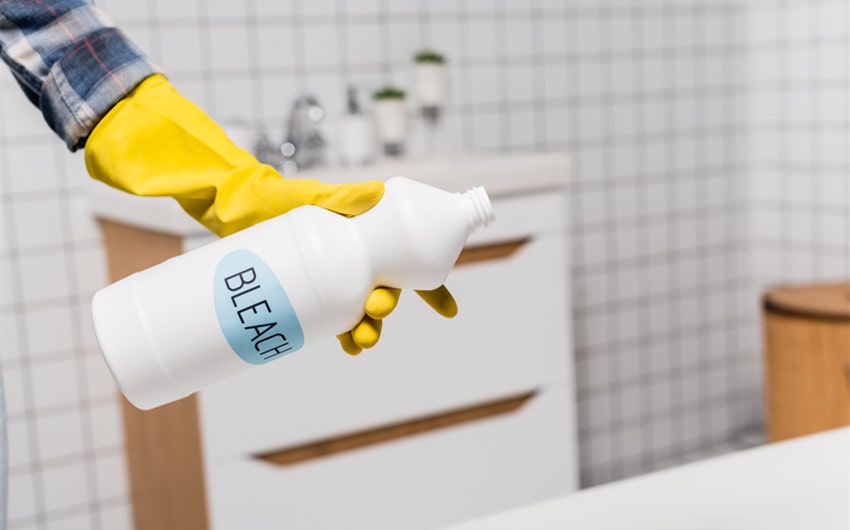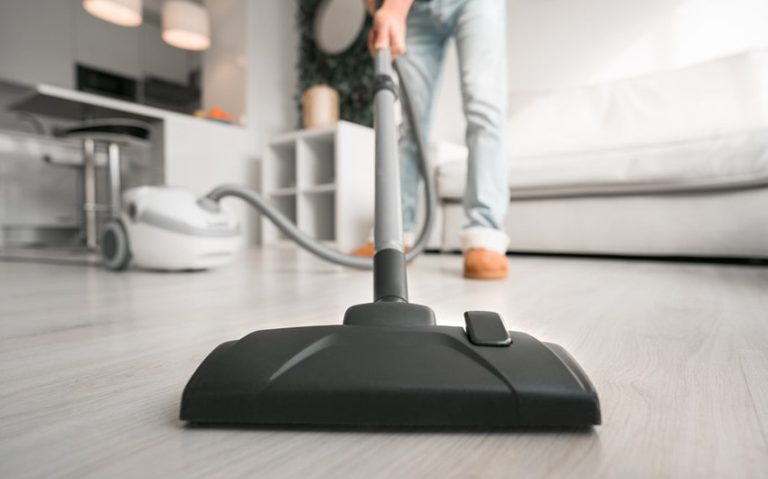Leather, with its timeless elegance, demands thoughtful care. Understanding what can you use to clean leather ensures its enduring grace and durability. Let’s delve into the art of leather maintenance, revealing the secrets to its pristine condition.
Understanding Leather Types and Their Cleaning Needs

When it comes to leather, one size does not fit all. This luxurious material comes in various types, each with its unique texture, durability, and care requirements. Understanding these distinctions is crucial for choosing the right cleaning approach that will preserve, not harm, your leather items.
Full-Grain Leather
As the highest quality of leather, full-grain retains the entire grain layer, showcasing the hide’s natural surface, complete with imperfections and inherent toughness. This type is typically found in high-end furniture and premium footwear. Its robust nature means it can handle gentle cleaning methods, but it also develops a rich patina over time, which should be preserved and not scrubbed away.
Top-Grain Leather
A step down from full-grain, top-grain leather has been sanded to remove imperfections, resulting in a more uniform appearance but lesser durability. It’s often used in luxury goods and requires a bit more care to maintain its smooth finish. A mild cleaner followed by a good conditioner works best to keep top-grain leather soft and supple.
Bonded Leather
Made from leftover scraps and fibers bonded together with adhesives, bonded leather is the least durable but most affordable option. It’s often used in budget-friendly furniture and accessories. Due to its composite nature, bonded leather is sensitive to harsh cleaners and excessive moisture, necessitating the use of very gentle cleaning solutions and minimal water.
Suede and Nubuck
These are softer, brushed types of leather that are more susceptible to staining and water damage. Their velvety surface requires specialized care, often involving a dry brush or a cleaner specifically designed for suede or nubuck to avoid matting or altering the texture.
Patent Leather
Known for its glossy finish, patent leather is coated with a plastic or lacquer layer, making it more resistant to stains but prone to scratches. Cleaning requires a delicate balance to maintain its shine without cracking the surface, typically involving a soft, damp cloth and mild soap, avoiding any abrasive materials that could scratch the glossy finish.
For each type of leather, it’s essential to start with the least invasive cleaning method. Testing any cleaner on a small, inconspicuous area first can prevent unwanted damage. Regular dusting and immediate attention to spills can go a long way in maintaining the beauty and integrity of leather items, ensuring they age gracefully and last for years to come.
Everyday Items for Leather Cleaning

Navigating leather care doesn’t necessarily require specialized products; many everyday items found in your home can be effective and safe for cleaning leather, provided they’re used correctly. Here’s a closer look at some household staples that can help keep your leather in top condition:
1. Mild Soap and Water
The gentlest option for leather cleaning involves a mix of mild, unscented soap with lukewarm water. This solution can tackle surface dirt without harsh chemicals. Use a soft, lint-free cloth, lightly dampened with the soapy water, to gently wipe the leather’s surface. Avoid soaking the leather; a minimal amount of water is key to prevent over-saturation, which can lead to stiffness or warping once the leather dries.
2. White Vinegar and Water Solution
For more stubborn stains or odors, a diluted solution of equal parts white vinegar and water can be a leather-safe alternative. The natural acidity of vinegar helps break down stains without damaging the leather. Apply this solution sparingly with a soft cloth, and always follow up with a clean, damp cloth to remove any vinegar residue, as leaving it on could cause the leather to dry out.
3. Baking Soda
Oily stains can be particularly challenging on leather, but baking soda is a natural absorbent that can draw out grease without harsh scrubbing. Sprinkle a small amount of baking soda directly on the stain and let it sit for a few hours, or even overnight for deep stains. The baking soda will gradually absorb the oil, making it easier to gently brush away with a soft-bristled brush or cloth.
4. Olive Oil and Vinegar Mix
A homemade concoction of olive oil and vinegar can act as both a cleaner and a conditioner for leather, particularly for types that benefit from occasional conditioning. Mix one part white vinegar with two parts olive oil to create a solution that can revive dull leather.
Apply a small amount to a soft cloth and rub it into the leather in circular motions. This not only cleans but also conditions the leather, helping to keep it supple. However, this method should be used sparingly and with caution, as over-application of oil can attract dirt and lead to greasy residue.
5. Cornstarch
Similar to baking soda, cornstarch is effective in absorbing grease and oil stains. Gently rub it into a greasy stain and allow it to sit for several hours. The cornstarch will help lift the grease from the leather, which can then be brushed off lightly.
6. Rubbing Alcohol
For ink stains, rubbing alcohol can be a last resort. Dab a cotton swab in rubbing alcohol and gently apply it to the stain, taking care not to spread the ink further. Follow up with a damp cloth to remove any alcohol residue, as it can dry out the leather.
When using these everyday items, the overarching principle is moderation. Excessive use of any substance, even something as harmless as water, can lead to unintended damage. After any cleaning treatment, it’s advisable to let the leather air dry naturally, away from direct heat or sunlight, to prevent cracking or fading.
Regular maintenance, combined with prompt attention to spills and stains, can ensure your leather items remain pristine and well-preserved for years to come.
What Not to Use on Leather

While leather is renowned for its durability and classic appeal, it requires careful handling to maintain its beauty over time. Certain products and substances can cause irreversible damage to leather, so it’s crucial to know what to avoid in your cleaning routine.
1. Harsh Chemicals
Cleaners containing bleach or ammonia are too abrasive for leather and can cause significant damage. These harsh chemicals can strip away the natural oils in leather, leading to dryness, cracking, and discoloration. Always opt for gentle, pH-balanced cleaning solutions specifically formulated for leather care.
2. Abrasive Cleaners
Scouring powders and other abrasive cleaners can scratch the surface of leather, damaging its finish and texture. Leather’s unique surface requires a soft touch; hence, always use a soft cloth and avoid any cleaner with a gritty texture.
3. Alcohol and Acetone
Products containing alcohol or acetone, such as nail polish removers and some disinfectants, can remove the dye from leather, leading to faded spots and an uneven appearance. While rubbing alcohol can sometimes be used in small amounts for specific stains, it should be applied with extreme caution and only as a last resort.
4. Excessive Water
While a damp cloth can be used for cleaning, soaking leather in water is detrimental. Leather absorbs water, and excessive moisture can lead to warping, stiffness, and mildew growth as the leather dries. Always use the minimal amount of water necessary for cleaning and ensure the leather is dried properly afterward.
5. Waxes and Silicone
Products containing waxes, silicone, and other heavy oils can clog leather’s pores, affecting its ability to breathe. Over time, this can lead to a buildup that attracts more dirt and deteriorates the leather’s finish. While some leather conditioners may contain oils, they are specifically designed to be absorbed by leather without causing buildup.
6. Undiluted Vinegar
While diluted vinegar can be a useful cleaning agent for leather, using it undilately can be harmful. The high acidity can damage the leather surface, especially if left on for too long. Always dilute vinegar with water and use sparingly.
7. Magic Erasers
Magic erasers might seem like a versatile cleaning tool, but their abrasive nature can be too harsh for leather surfaces, potentially stripping away the finish and leaving the leather looking worn and damaged.
8. All-Purpose Cleaners
Many all-purpose cleaners are not suitable for leather because their chemical compositions aren’t tailored to the delicate nature of leather. These cleaners may contain ingredients that can dry out or discolor leather.
Understanding what not to use on leather is just as important as knowing the correct cleaning methods. When in doubt, it’s best to stick with products and methods specifically recommended for leather care. Regular, gentle maintenance using the appropriate products will keep your leather looking its best for years to come.
Cleaning Techniques and Best Practices

Proper leather cleaning and maintenance require more than just the right products; it involves a series of techniques and best practices designed to preserve the integrity and appearance of leather. Here’s a guide to effective leather cleaning methods, ensuring your items not only get cleaned but also maintain their quality over time.
1. Initial Testing
Before applying any cleaning solution, even a mild one, always conduct a spot test on a hidden area of the leather. This precaution ensures that the cleaner won’t cause discoloration or damage. Wait for the test spot to dry completely before proceeding to assess the outcome.
2. Gentle Cleaning
When cleaning leather, gentle is the operative word. Use a soft, clean cloth, preferably microfiber, to avoid scratching the surface. For regular dusting, a dry cloth is sufficient. When using a cleaning solution, dampen the cloth slightly and wring out any excess liquid to avoid saturating the leather.
3. Circular Motions
Apply cleaning solutions using gentle, circular motions rather than scrubbing back and forth. This technique helps to lift dirt and stains without stressing the leather. For tougher stains, you may need to apply a bit more pressure, but always proceed with caution to avoid damaging the material.
4. Immediate Attention to Spills
Leather is porous and can absorb liquids quickly, leading to potential stains and watermarks. Blot spills immediately with a clean, dry cloth. Avoid wiping, as this can spread the liquid. For oil or grease stains, sprinkle a bit of baking soda or cornstarch on the spot, let it sit to absorb the oil, and then gently brush it away.
5. Drying Leather Properly
After cleaning, allow leather to air dry naturally away from direct heat sources and sunlight, which can cause fading and drying. Do not use hair dryers or other artificial heat sources, as these can warp or crack the leather.
6. Conditioning
After cleaning and drying, consider applying a leather conditioner to keep the material supple and prevent cracks. Use a conditioner suited to your leather type and follow the manufacturer’s instructions. Apply in a thin, even layer, and buff gently with a soft cloth to ensure it’s fully absorbed.
7. Avoiding Over-Cleaning
Leather doesn’t need to be cleaned frequently. Over-cleaning can strip it of its natural oils, leading to dryness and cracking. A few times a year for a deep clean is usually sufficient, with spot cleaning as needed.
8. Storing Leather Correctly
When not in use, store leather items properly to prevent dust buildup and damage. Use breathable fabric covers instead of plastic, which can trap moisture and lead to mildew. Ensure leather goods are stored in a cool, dry place to maintain their condition.
By adhering to these cleaning techniques and best practices, you can ensure your leather items remain in pristine condition, extending their lifespan and maintaining their aesthetic appeal. Regular, mindful care will keep your leather looking luxurious and resilient, ready to stand the test of time.
Conclusion
Navigating leather care with informed choices about what can you use to clean leather not only enhances its longevity but also maintains its aesthetic allure. Regular, mindful maintenance can keep your leather treasures in their best form, inviting admiration for years to come.







